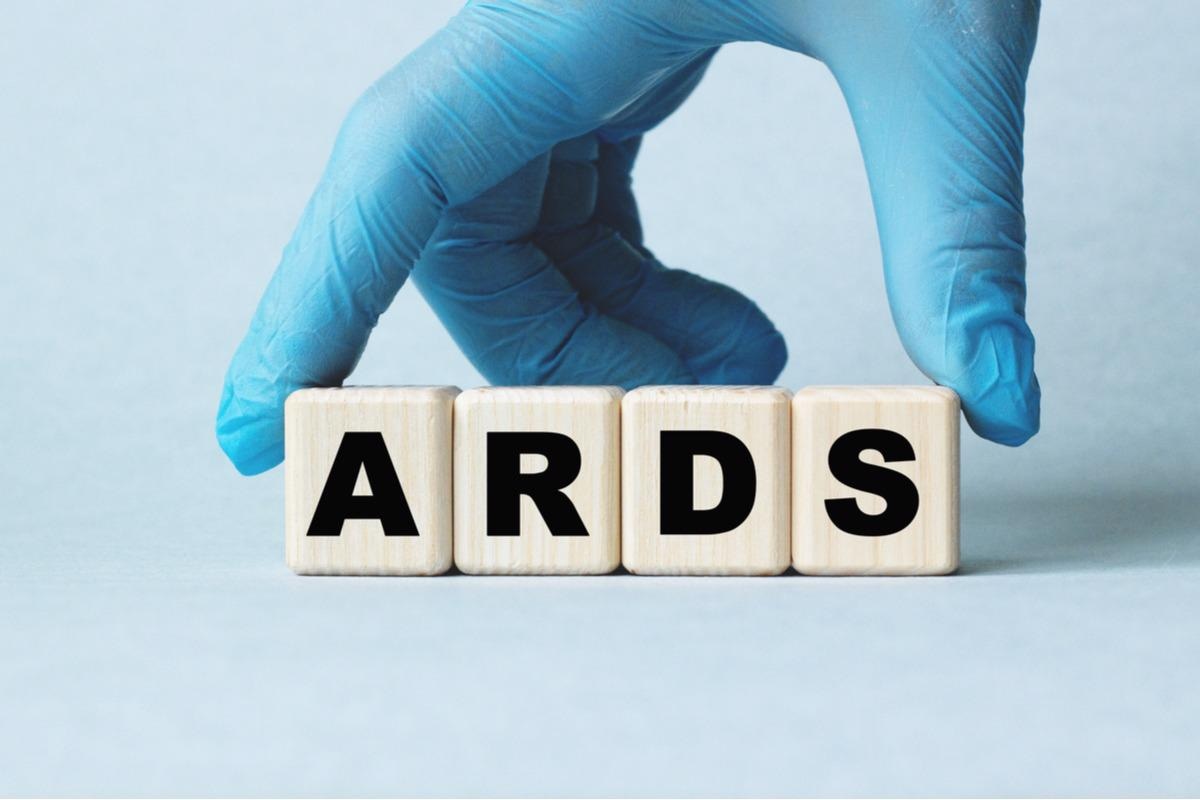Early-stage alveolar epithelial cell necrosis linked to COVID-19-induced acute respiratory distress syndrome
In a study posted to the medRxiv* preprint server, an interdisciplinary team of researchers analyzed whether alveolar epithelial cell necrosis at an early stage of severe acute respiratory syndrome coronavirus 2 (SARS-CoV-2) infection and subsequent releases of damage-associated molecular patterns (DAMPs) could aggravate coronavirus disease 2019 (COVID-19)-associated acute respiratory distress syndrome (ARDS).
 Study: Early Alveolar Epithelial Cell Necrosis is a Potential Driver of ARDS with COVID-19. Image Credit: PANsight/Shutterstock
Study: Early Alveolar Epithelial Cell Necrosis is a Potential Driver of ARDS with COVID-19. Image Credit: PANsight/Shutterstock
About the study
COVID-19 in severe cases manifests as viral pneumonia-induced ARDS associated with severe alveolar tissue injury. One of the major challenges in the treatment of COVID-19 is the high number of patients needing advanced respiratory support due to ARDS. A characteristic feature of ARDS is the increase in capillary permeability due to damage of the alveolar epithelial cells and the consequent release of pro-inflammatory cytokines.
Alveolar tissue injury in severe COVID-19 cases is elevated after passing the peak viral load. In the current study, the researchers investigated the detailed mechanisms of alveolar epithelial cell death using an animal model mimicking COVID-19-induced ARDS.
Study design
A single-center observational study was conducted on adult COVID-19 patients with and without ARDS who were admitted to Yokohama City University Hospital, Japan, from January 2020 to January 2021. Patients’ clinical data were retrospectively collected. Enzyme-linked immunosorbent assay (ELISA) was used for the estimation of different serum biomarker levels of the ARDS, non-ARDS, and control groups.
A mouse model mimicking severe COVID-19-induced ARDS was established by intratracheal instillation of SARS-CoV-2 spike protein combined with polyinosinic: polycytidylic acid (poly (I: C)) to C57/BL6J mice. Post intra-tracheal instillation, anti-high mobility group box protein 1 (HMGB-1) neutralizing antibodies were administered. The quantification of cytokines and chemokines was performed through semi-quantitative multiplex cytokine assay using bronchoalveolar lavage fluid (BALF) of the mouse. Immunoblotting assays were used for the estimation of mixed lineage kinase domain-like (MLKL) and gasdermin D (GSDMD).
Findings
The results demonstrated that compared to patients without ARDS, patients with ARDS showed increased acute physiology and chronic health evaluation–II (APACHE-II) scores, white blood cell counts, C-reactive protein (CRP) levels, D-dimer levels, and lower ratios of partial pressure of arterial oxygen to fraction of inspired oxygen (P/F ratios) and lymphocyte counts. Mortality occurred in eight (26.7%) patients with ARDS.
Among patients with ARDS, five developed acute renal injuries; however, only a small increase in total bilirubin concentration was observed in several patients showing that organ dysfunction in most patients was primarily limited to the lungs. Levels of three alveolar tissue injury markers – soluble receptors for advanced glycation end products (sRAGE), angiopoietin-2 (ANG-2), and surfactant protein (SP)-F – were significantly higher in patients with ARDS compared to healthy controls. Immediately after admission, a significant increase in sRAGE levels was observed, which reduced gradually, while ANG-2 and SP-F levels peaked at a later stage of admission.
In COVID-19 patients, serum levels of epithelial necrosis markers cytokeratin 18 (CK18)M65 and M30 at the time of admission were positively correlated with disease severity. In ARDS patients, the M30/M65 ratio was significantly low compared to healthy controls or non-ARDS patients. Moreover, HMGB-1 levels were significantly increased in ARDS patients compared to non-ARDS patients and healthy controls.
In the COVID-19-induced ARDS mouse models, researchers observed leukocyte infiltration, increased levels of sRAGE, ANG-2 in BALF, and lung tissue injury. Several chemokines and cytokines levels reported to be elevated in COVID-19 patients were significantly increased in BALF of mouse models of severe COVID-19 as compared to controls.
M30 and M65 levels increased in the BALF of COVID-19 mouse models versus the control group, while the M30/M65 ratio reduced with an increase in severity of lung injury. HMGB-1 levels were significantly higher in the severe COVID-19 mouse model compared to the other two groups.
In severe COVID-19 mouse models, levels of phospho-MLKL and cleaved GSDMD (executioners of necroptosis and pyroptosis) in lung tissues were significantly increased versus the control and mild groups. Immunohistochemical analysis demonstrated that both phospho-MLKL and GSDMD are localized within alveolar walls.
The team observed that anti-HMGB-1 neutralizing antibody treatment four hours after intratracheal instillation of poly (I: C), and the SARS-CoV-2 spike protein significantly reduced levels of leukocyte infiltration, total protein, sRAGE, and ANG-2 in the BALF of the mouse model.
Conclusion
The findings of this research work demonstrated that programmed necrosis of alveolar epithelial cells including necroptosis and pyroptosis occurs at the very early disease stage of COVID-19 and is a hallmark of COVID-19-induced ARDS. The study indicated that DAMPs released from necrotic alveolar epithelial cells such as HMGB-1 are potential triggers of disease exacerbation in ARDS and therefore may act as promising therapeutic targets that may prevent the aggravation of COVID-19-induced ARDS after hospital admission.
However, this research work has some limitations. These include a single center for clinical samples as opposed to multicentre studies, mouse models unexposed to infectious strains of SARS-CoV-2 and evaluating the efficacy of only a single DAMPs HMGB-1 while several DAMPs were released from necrotic cells.
*Important notice
medRxiv publishes preliminary scientific reports that are not peer-reviewed and, therefore, should not be regarded as conclusive, guide clinical practice/health-related behavior, or treated as established information.
- Kentaro Tojo, Yamamoto Natsuhiro, Nao Tamada, Takahiro Mihara, Miyo Abe, Takahisa Goto. (2022). Early Alveolar Epithelial Cell Necrosis is a Potential Driver of ARDS with COVID-19. medRxiv. doi: https://doi.org/10.1101/2022.01.23.22269723 https://www.medrxiv.org/content/10.1101/2022.01.23.22269723v1
Posted in: Medical Research News | Medical Condition News | Disease/Infection News
Tags: Acute Respiratory Distress Syndrome, Animal Model, Antibodies, Antibody, Assay, Biomarker, Blood, Cell, Cell Death, Chemokines, Chronic, Coronavirus, Coronavirus Disease COVID-19, covid-19, C-Reactive Protein, Cytokine, Cytokines, D-dimer, Efficacy, Enzyme, Glycation, Hospital, Kinase, Leukocyte, Lungs, Lymphocyte, Mortality, Mouse Model, Necroptosis, Necrosis, Oxygen, Physiology, Pneumonia, Protein, Research, Respiratory, SARS, SARS-CoV-2, Severe Acute Respiratory, Severe Acute Respiratory Syndrome, Spike Protein, Syndrome, White Blood Cell

Written by
Susha Cheriyedath
Susha has a Bachelor of Science (B.Sc.) degree in Chemistry and Master of Science (M.Sc) degree in Biochemistry from the University of Calicut, India. She always had a keen interest in medical and health science. As part of her masters degree, she specialized in Biochemistry, with an emphasis on Microbiology, Physiology, Biotechnology, and Nutrition. In her spare time, she loves to cook up a storm in the kitchen with her super-messy baking experiments.
Source: Read Full Article
